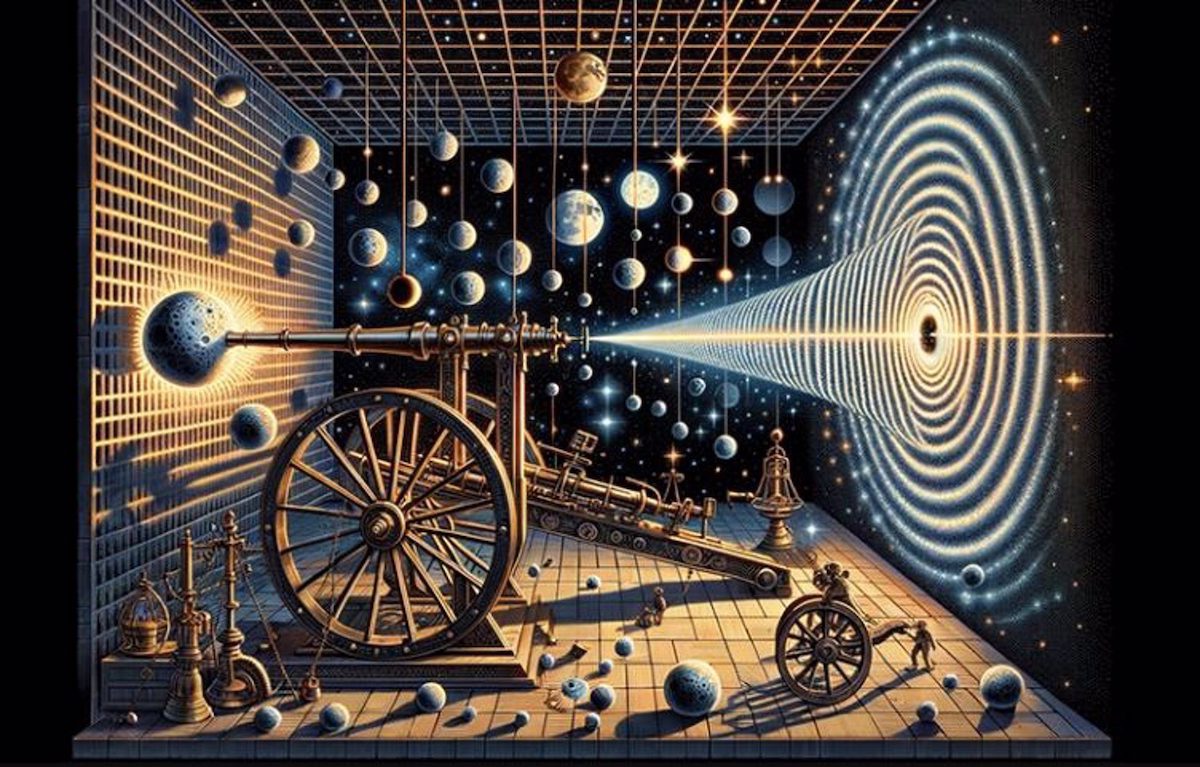It has long been believed that these two theories do not fit together, but what if gravity and quantum mechanics could coexist without altering Einstein’s classical concept of spacetime?
Researchers at University College London (UCL) have presented a radical theory in the journal Physical Review. This approach, known as the “post-quantum theory of classical gravity,” challenges the prevailing assumption that Einstein’s theory of gravity needs to be modified to suit the Adapt quantum theory.
Quantum theory and Einstein’s gravity
All matter in the universe obeys the laws of quantum theory, but we really only observe quantum behavior at the scale of atoms and molecules. Quantum theory states that particles obey Heisenberg’s uncertainty principle and we can never know their position or speed at the same time. In fact, they don’t even have a defined position or speed until we measure them. Particles like electrons can behave more like waves, acting almost as if they could be in many places at once (more specifically, physicists describe particles as a “superposition” of different places).
Quantum theory governs everything from semiconductors, which are ubiquitous in computer chips, to lasers, superconductivity or radioactive decay. Instead, we say that a system behaves classically when its underlying properties are defined. A cat appears to behave in a classic manner: it is either alive or dead, but not both, nor is it in a superposition of life and death. Why do cats behave classically and small particles behave quantumly? We don’t know, but post-quantum theory does not require the measure postulate because the classicity of spacetime infects quantum systems and leads to their localization.
Newton’s theory of gravity gave way to Einstein’s general theory of relativity (GR), which states that gravity is not a force in the usual sense. Instead, heavy objects like the sun bend the fabric of space-time in such a way that they cause the Earth to rotate around them. Spacetime is nothing but a mathematical object consisting of the three dimensions of space and considering time as the fourth dimension. General relativity predicted the formation of black holes and the Big Bang. It says that time passes at different rates at different points in space and that your smartphone’s GPS must take this into account in order to correctly determine your location.
The incompatibility between Einstein’s gravity and quantum mechanics arises from fundamental differences in their concepts and approaches. While Einstein’s theory of general relativity views space and time as a continuous web that curves with mass and energy, quantum mechanics operates in a fixed, uncurved space-time framework. Furthermore, relativity theory is deterministic and offers accurate predictions, unlike the probabilistic nature of quantum mechanics. These theories also differ in the scales they study: relativity focuses on the cosmic and the gravitational massive, while quantum mechanics focuses on the atomic and subatomic. Their mathematical formalisms are also different, which makes it difficult to integrate both into a unified theory.
A unified theory?
Rather than changing spacetime, the new theory modifies quantum theory and predicts an intrinsic break in predictability mediated by spacetime itself. This would result in random and violent fluctuations in spacetime larger than predicted by quantum theory, making the apparent weight of objects unpredictable if measured with sufficient precision.
A second paper, published simultaneously in Nature Communications, examines some implications of the theory and proposes an experiment to test it: measuring the mass of an object with great precision to see whether its weight increases over time seems to fluctuate. For example, the International Bureau of Weights and Measures in France regularly weighs a mass of 1 kg, which used to be the norm of 1 kg. If the fluctuations in the measurements of this 1 kg mass are smaller than required for mathematical consistency, the theory could be rejected.
Professor Jonathan Oppenheim, lead developer of the theory, and his team have been testing and researching its effects for five years. The theory suggests that if spacetime does not have a quantum nature, then there must be random fluctuations in the curvature of spacetime that have a specific signature that can be verified experimentally. Furthermore, this theory has implications beyond gravity. For example, the problematic “measurement postulate” of quantum theory would not be necessary because quantum superpositions are inevitably localized through their interaction with classical spacetime.
REFERENCES
A post-quantum theory of classical gravity? in the physical examination
